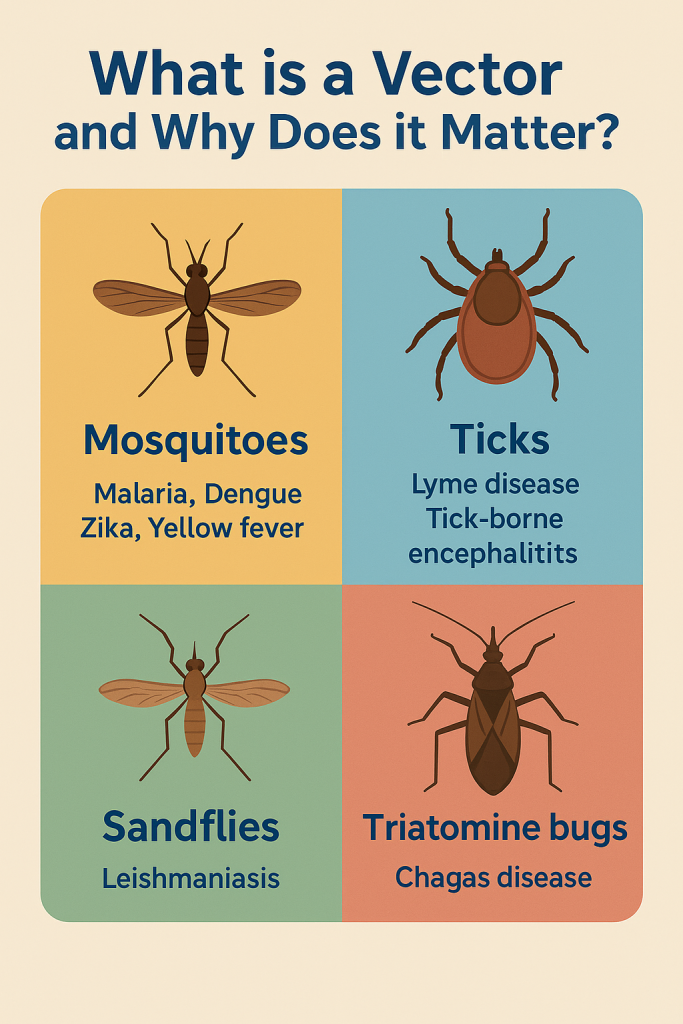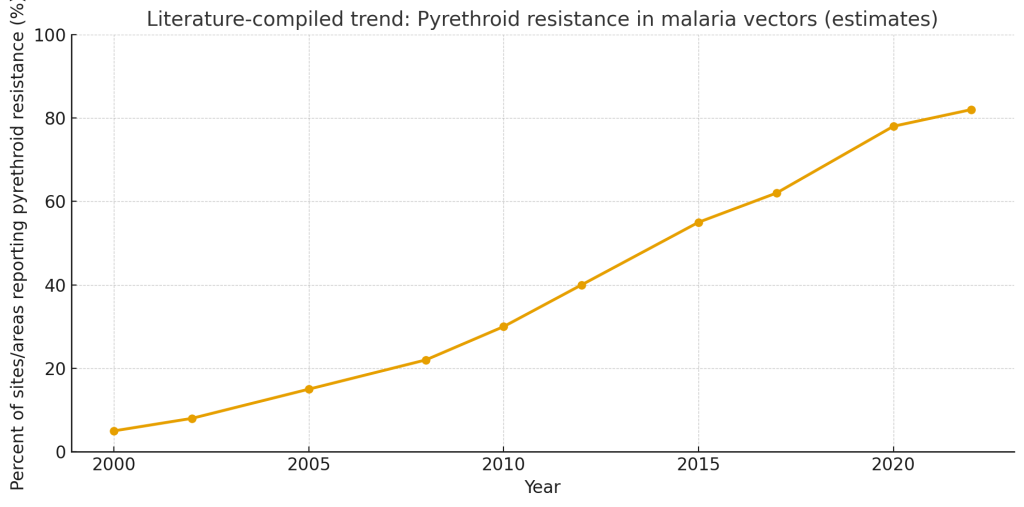Introduction
When we think of global health, we often picture vaccines, medicines, and hospitals. But there’s another key player in the fight against disease: vectors. Vectors are living organisms that transmit pathogens between humans or from animals to humans. They are the silent couriers of diseases like malaria, dengue, Zika, leishmaniasis, and Lyme disease.
Understanding what vectors are—and why they matter—is the first step toward protecting communities and strengthening public health systems.
What Exactly is a Vector?
A vector is any living organism capable of carrying and transmitting infectious pathogens. The most common examples include:
- Mosquitoes – transmit malaria, dengue, Zika, yellow fever.
- Ticks – spread Lyme disease and tick-borne encephalitis.
- Sandflies – responsible for leishmaniasis.
- Triatomine bugs – vectors of Chagas disease.
These organisms don’t cause the disease themselves, but they play a crucial role in spreading it from one host to another.

Why Vectors Matter in Global Health
Vector-borne diseases affect over 3 billion people worldwide and cause more than 700,000 deaths each year (WHO). They not only impact human health but also slow down economic growth, strain healthcare systems, and reduce workforce productivity.
For example:
- Malaria alone kills nearly 600,000 people annually, mostly children under five in sub-Saharan Africa.
- Dengue fever is one of the fastest-spreading mosquito-borne diseases, now affecting over 120 countries.
📸

The Growing Challenge of Resistance
The fight against vectors is becoming more complex. For decades, insecticides have been our main line of defense. But just like bacteria develop resistance to antibiotics, mosquitoes and other vectors are evolving resistance to insecticides.
This resistance threatens to undermine hard-won progress in reducing malaria, dengue, and other diseases. If we don’t adapt, outbreaks could return with greater force.

We plotted values are aggregated, literature-informed estimates, not a direct single-source CSV extraction. I synthesized key, citable summary points from:
- Hancock PA et al., PLOS Biology (2020) — continent-wide modeled increases and Figshare data for figures. PLOS
- Moyes CL et al., Scientific Data (2019) — the Dryad analysis-ready resistance datasets (1957–2017) used by later modelers. Nature
- WHO insecticide resistance reporting and global summaries (Global report / Malaria Threats). World Health Organization+1
- National trend papers (example: Tungu et al., 2023 — documented a rise from ~0% pyrethroid resistance in 2004 to >80% of sites by 2020 in Tanzania).
Moving Forward
Understanding vectors is just the beginning. To protect communities worldwide, we need:
- Surveillance systems to track vector populations.
- Innovative control tools that go beyond traditional insecticides.
- Collaborative efforts that bring together governments, researchers, and communities.
At Vecbio Solutions, we believe that tackling vector-borne diseases requires scientific expertise, strategic planning, and global partnerships. By starting with the basics—understanding what vectors are—we can build stronger strategies to stop them.